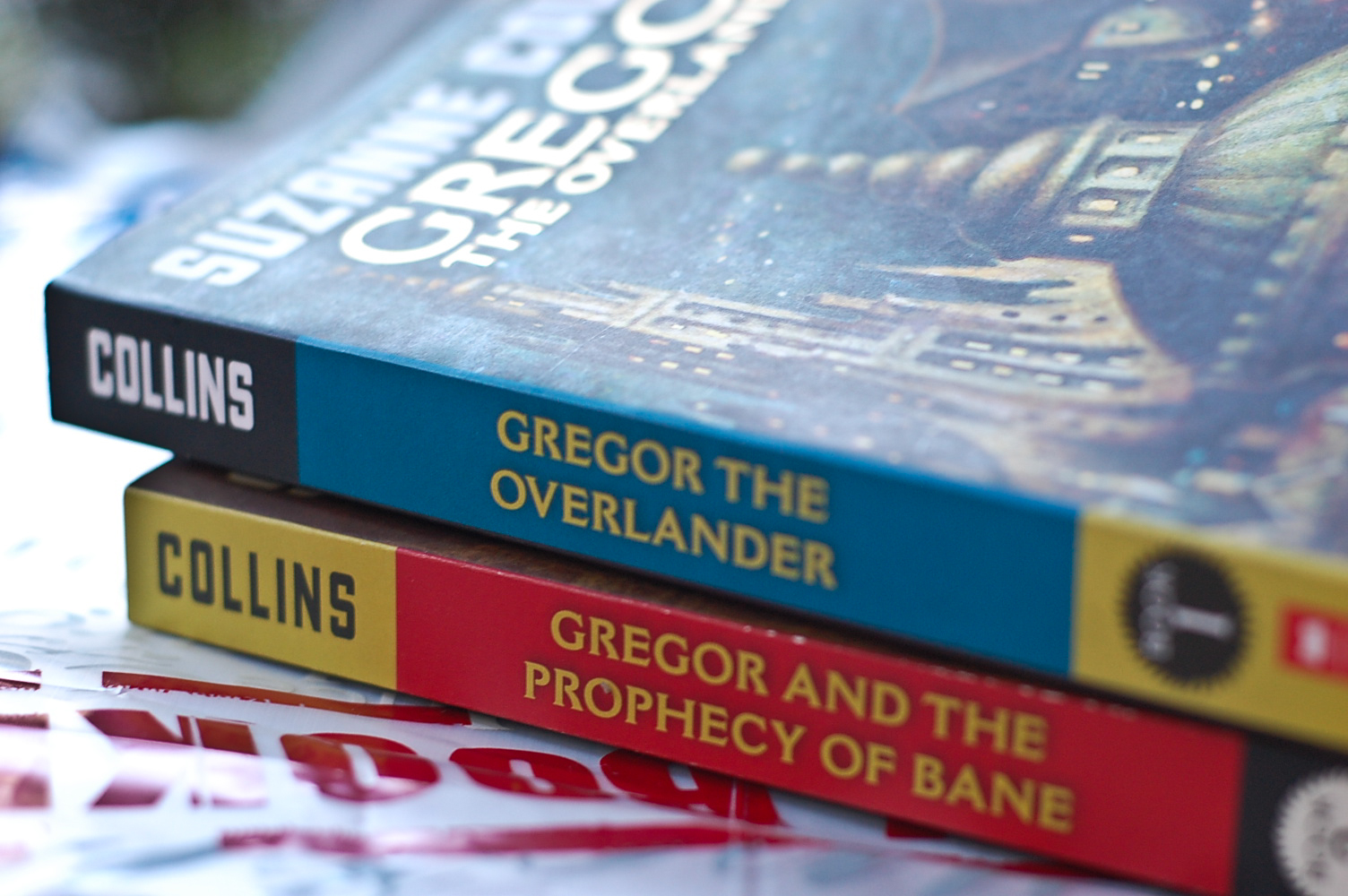Think of “The Hunger Games” for a moment. What first comes to mind? Is it the intense dystopia ruled by a corrupt government, sassy Katniss’ conflicting love for two men or the murderous Hunger Games themselves?
Personally, I think of the fizzling out halfway through “Catching Fire” that extends through almost the entire book of “Mockingjay.” Overthrowing a government didn’t need three whole books, and it definitely didn’t need four movies. Because while fiery rebellious passion might stay with the characters battling for their freedom, that doesn’t necessarily mean the reader will feel it, too.
That said, Suzanne Collins still writes incredible stories that everyone should definitely read, like one of my personal favorites, “The Underland Chronicles.”
Imagine a world deep under the earth. In it, cavernous expanses of dripping stalactites and narrow, twisting tunnels house countless creepy-crawlies. Surrounded by darkness and unhindered by human slaughter for thousands of years, pests grow as tall and as clever as people, making the world beneath humanity’s feet a paradise for the rats, bats, cockroaches and spiders that call it home.
Then 400 years ago, as he believed life on the surface of the planet would end, a crazy man named Bartholomew of Sandwich led a group of humans underground to protect them. Over the centuries the humans fought the vermin away and carved out a city for themselves. They learned to survive in the dangerous Underland as the lack of sunlight turned their skin from pale to translucent.
Fast-forward to the present and in comes Gregor, a kid from New York whose father has left his family behind. As the oldest child, 11-year-old Gregor struggles to help care for his grandmother and two little sisters while his mother works constant overtime to provide for them, all while convinced that the father might eventually return.
One day, Gregor and his baby sister, Boots, fall through the basement and down into the Underland, where their lives take a turn that makes “The Hunger Games” look like a sunny afternoon.
So what makes “The Underland Chronicles” so much better than “The Hunger Games” trilogy?
The first book of “The Hunger Games” has a fascinating and captivating story, no doubt about that. But after the first one, the intensity dwindles, and the story gets convoluted. I wanted to see Panem completely revolutionized by book two, but the first-person, present tense gives action to unnecessary thoughts and extends trivial scenes, like the prep team getting Katniss ready to entertain the nation.

Yes, I understand that Katniss is like a lamb for slaughter and that the people of the Capitol are disgustingly selfish. No, I don’t need to see it a dozen times.
“The Underland Chronicles,” however, stays consistently interesting throughout the whole series. Every chapter carries significant weight for the plot, character development and world-building. Each new book shows different aspects of the incredible Underland and introduces only a few new, highly relevant characters. It makes the story much easier and more enjoyable to follow.
Although “The Hunger Games” does share the desperate poverty of ignored places, which people should be aware of, it doesn’t typically hit home for readers.
The kind of poverty Collins shows in “The Underland Chronicles” reaches a wider audience: poor kids, watching their parents work day and night every day of the week, who want to help the family however they can. Kids who find odd jobs like Gregor and give all the money to their family, who go hungry to make sure that what little food they have in the pantry goes to their younger siblings, who have to humbly accept the charity of their more fortunate neighbors — those kids can all relate to Gregor.
He doesn’t hunt in the woods to care for his family. He has to rely on those around him for help, to ask for work or food. In “The Hunger Games,” almost everyone in Katniss’ district has the same awful economic situation, and those who don’t tend to hoard what they have in fear of becoming like the starved, filthy remainder of District 12.
Shame in poverty doesn’t exist there, just bitterness and sorrow. But Gregor’s family has to deal with all of it in a far more realistic manner.
In “The Underland Chronicles,” the relationships formed feel more genuine. No tragic backstory tells you how characters met, like Katniss and Peeta in “The Hunger Games,” which skips the part where the reader bonds with them.
Collins shows how Gregor learns to appreciate each of the Underlanders — or to stay away from them — as the story unfolds, which makes the readers develop a stronger connection with them, too.
“The Underland Chronicles” also carries the weight and hardship of war like “The Hunger Games,” but rather than being forced into the situation and battling out of desperation as Katniss does, Gregor stays to help by choice. The friendships he forms bind him to serve, which shows the strength of his heart and the importance of relationships.

In “The Hunger Games,” you understand the corruption of the government right away. It takes some time in “The Underland Chronicles” to comprehend all the horrible devastation the humans in the Underland have caused. As Collins drops more hints throughout the series as to what tragedies people have created, the reader sees the bigger picture of humanity’s evil and gets a broader scope of the fascinating world.
The series explains that there’s more than one way to resolve large-scale societal conflict. And although “The Hunger Games” shows that fighting back with violence and war will provide results, “The Underland Chronicles” promotes a better path to peace by showing positive communication between disagreeing groups and by underlining the heartbreaking losses caused by war.
The reader can only feel empathy for characters if they express empathy among one another, which Gregor and his friends do and Katniss often does not.
A great deal of the bonding among characters, and between the characters and the reader, happen through humor. The tone of these books is usually serious. But the sweet silliness of baby Boots, the cultural misunderstandings between Gregor and the Underlanders and the random thoughts of an 11-year-old boy dish out plenty of comic relief.
Let “The Hunger Games” gather dust on your shelf. The trilogy would be so much better if the fight of Katniss and the Capitol were as relatable and well-written as Gregor’s journey. Pick up “The Underland Chronicles” instead, and get ready for one of the most moving adventures you’ll ever read.

















